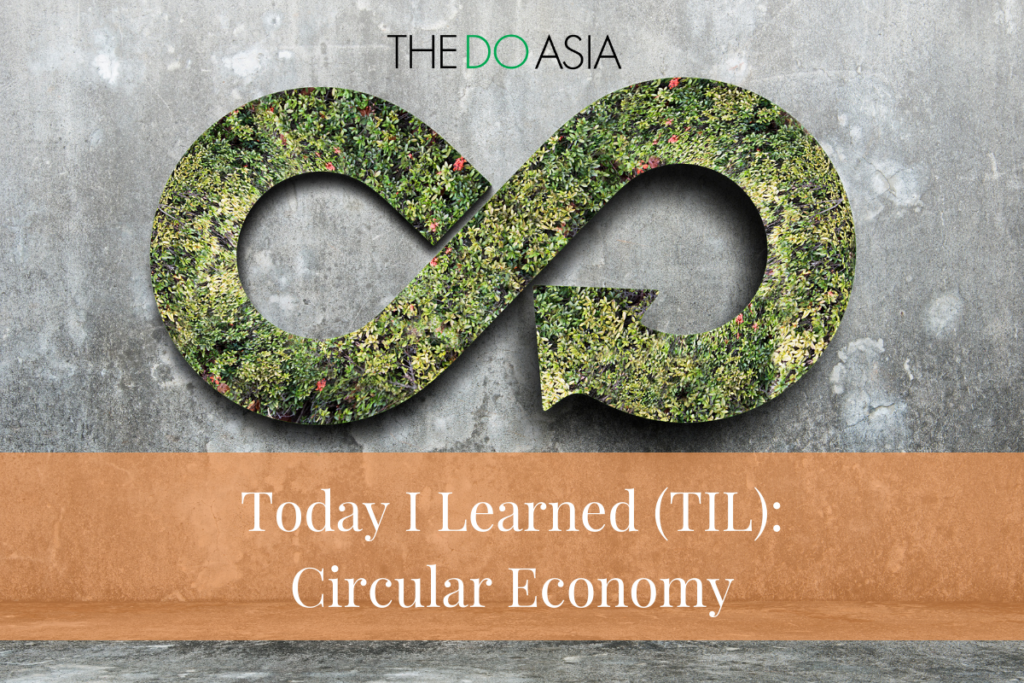What is Circular Economy?
Short answer (according to the Ellen MacArthur Foundation): an economy where “waste is eliminated, resources are circulated, and nature is regenerated.”
A linear economy, on the other hand, has materials and resources taken from nature, then consumed, and lastly most of those disposed of. Despite having some degree of recycling, the process of recycling itself is energy-intensive. Recycling, by returning the product to its raw form, also fails to maximize the resources (e.g., labor, money) that went into making the product in the first place.
When dealing with finite non-biological materials (e.g., metals), we can share (e.g., power bank sharing), restore/maintain (e.g., Fashion Clinic), and reuse (e.g., Carousell) before recycling to ensure a continuous flow of resources within the system.
A circular economy also cares about the biological system. Biological materials like food, soil, and cotton should go back into the loop and feed the natural system. For example, composting (but first, reducing) our food wastes so they can turn into soil that grows more food.
Why is Circular Economy a hot topic?
A circular economy does not just solve one problem or make one aspect of life better. Quite the contrary, a circular mindset can improve our lives in many ways.
A circular economy has three main principles:
- To eliminate waste and pollution;
- To keep products and materials in use; and
- To regenerate natural systems.
Livable and resilient cities? We can design out waste and pollution to improve air quality and urban health (e.g., energy-efficient buildings). We can keep products in use, for example, by sharing rather than owning (e.g., bikes). With a regenerative natural system, nutrients can return to the soil so we can have cleaner air and water.
Regenerate biodiversity? Eliminating waste and pollution can reduce threats to biodiversity, circulating resources can reduce nature’s burden, and regenerating nature can make biodiversity thrive.
Bye-bye climate change? In a circular economy, we want to transition to renewable energy, have electrified transport, shift to a more plant-based diet, reduce our food waste, and more. Together, these actions can help accelerate our goal of net-zero emissions.
These are not the only things a circular economy can help with. Likewise, a circular economy can tackle plastic pollution, fashion wastes, and malnutrition.
How can we achieve a Circular Economy?
The specific tools you use, of course, would depend on the issue you are tackling. But the overarching idea is the same. We need to think of the whole system and the life cycle of each product. From sourcing to using, how do we minimize virgin resources, how do we prolong its life, and how do we bring its material back into the circle when its life is finished?
Cities are also crucial players in accelerating this space. Cities are a concentrated hub of talents and a platform for co-creation and idea exchanges. Using the power of neighborhoods, communities, and the private and public sectors, cities can plan for circular economies.
Examples of a Circular Economy
Let’s explore a food waste project in cities in the Netherlands–De Clique. De Clique collects food by-products like orange peels and food wastes from businesses. These by-products and wastes are then sold to innovators and manufacturers to make new products like food ingredients, cosmetics, and biomaterials. Rather than sending food wastes to landfills, the wastes are no longer “wastes” but materials for high-value products that continue to circulate in the economy. This initiative not only reduces waste but creates jobs and helps businesses realize the value of organic wastes.
We can’t achieve a circular economy by only having dozens of companies adopting this principle. Fundamentally, it is about everyone rethinking our system and using innovative ways to redesign our economy. That’s why we want to see you at our events so we can co-create a better Hong Kong, and even beyond that. See you soon!


